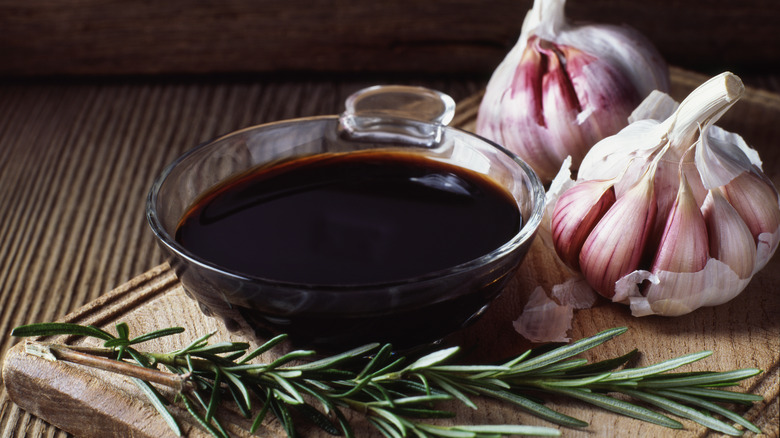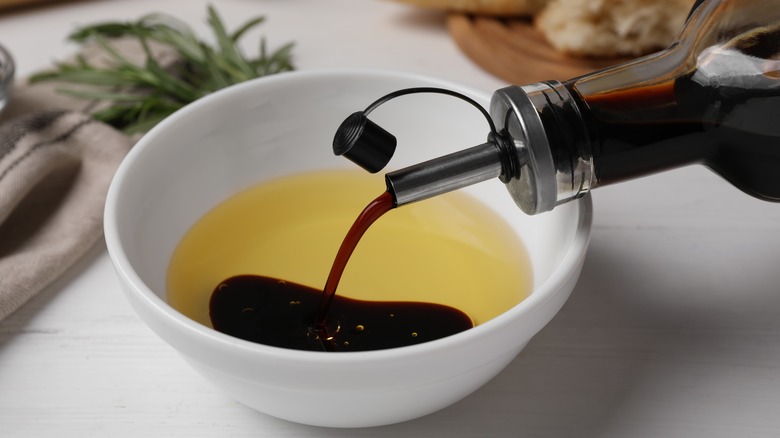Balsamic Vinegar Vs Vinaigrette: What's The Difference?
Unlike in literature, a foodstuff by any other name is often a totally different thing. Macarons and macaroons, confectionary truffles and the fungi variety, and the wide range of all possible pickles could all lead to madcap confusion. Balsamic vinegar and vinaigrette are similarly situated, though not as dramatically opposed as those chocolates and luxury tubers. They even share more in common than the rest of that list. But, much like red wine vinegar and balsamic, you still wouldn't necessarily want to swap them outright.
Balsamic vinegar is essentially an ingredient made from grape must (the whole, pulverized grapes, stem and all), while vinaigrette is a condiment. While you could reasonably serve a salad drizzled in the latter, for example, your dinner guests would rightfully look askance at greens soaked in the former. Balsamic vinegar in and of itself is merely a component of an eventual vinaigrette, even when combined with little more than extra virgin olive oil, lemon juice, salt, and pepper, and it has plenty of other applications, as well.
When to use balsamic vinegar and when to use a vinaigrette
Balsamic vinegar can vary wildly in quality in price, from your perfectly serviceable grocery store brand, all the way to the hundred year-aged stuff that can stretch into four figures. You might want to save the super spendy kind for the safe deposit box, or at least occasions when balsamic vinegar is front and center. Paired with fresh bread and extra virgin olive oil is ideal. It's also terrific drizzled over slices of fine Parmesan or fresh mozzarella. That and the many more reasonably priced options on the market are also great in marinades, glazes for meat such as chicken wings, and, thanks to its near-sweetness and viscosity, even on desserts like cheesecake and vanilla gelato or ice cream.
A vinaigrette, on the other hand, is actually way less versatile. Its primary use is in salads and their ilk. You could also reasonably use it to dip raw veggies like carrot and celery sticks. It also makes its way into some coleslaw and cold pasta preparations. And, although it isn't as flexible as its balsamic antecedent, vinaigrette can be made tons of different ways, depending on the alliums, herbs, and spices you bring to the mix.

